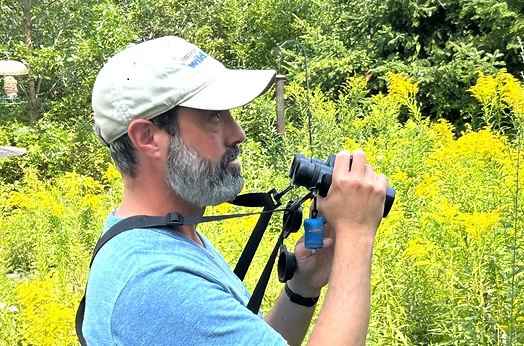
Derek Lovitch is involved in many bird-related activities: As a biologist, the author of several birding books, a bird guide, and the owner of a retail store for birders in Maine. Consequently, our interview with him covers many different aspects of birding. Here goes:
You are involved in a number of bird- and birding-related activities. Can you briefly describe them for us?
If it has to do with birds, we’re probably involved somehow! First and foremost, my wife, Jeannette, and I run an independent backyard birding and nature store, Freeport Wild Bird Supply. It’s more of a “nature center” style shop, with a large feeding station and native plant garden that has amassed a solid yard list for the side of a busy highway. Under the umbrella of the store is my tour guiding business, which sometimes involves being hired by other groups, but mostly involves working with local business partners and offering private tours and private guiding options. The store – and our brand as a whole – serves as the vehicle for our work in bird and birding advocacy and conservation. I also write about birds.
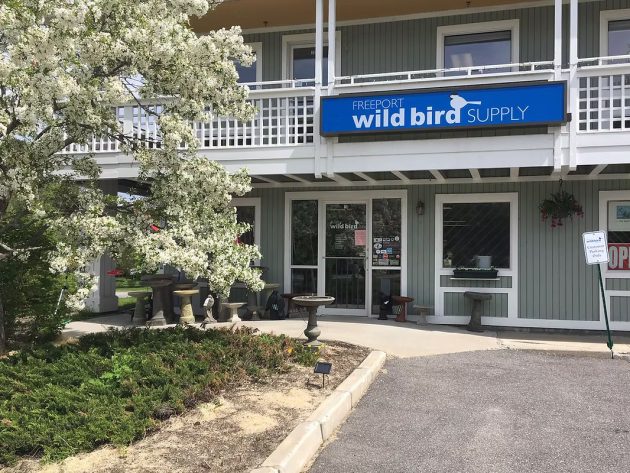
Roughly how much time do you spend on each of these?
I’m afraid that if I quantify it, I’ll realize how much I work, and it will make me question too much! But the store is the largest percentage of our time overall, although I am more than a full-time guide for much of May, June, and often July.
And which ones do you like best? Which part of your birding life is the most tedious?
That’s a good question, and one that’s difficult to answer as everything is so intertwined. And I guess it depends. I love it when I have a great, rewarding guiding experience where the client learns more than they ever expected to and finds joy in all things birding. It’s hard not to like conservation and advocacy successes, but at the same time, the failures are painful, and some of the fights can be tedious (how are we still arguing with an environmental center about reflective, bird-killing glass, for example?).
Of course, any job – whether retail or guiding or writing – can be tedious at times. But overall, I have such a varied work life and routine that it keeps life interesting all the time. I definitely find boredom tedious.
Has your role as a professional birder changed over the years—are you spending more time indoors (writing, running a store) than in the field, and how do you feel about that shift?
The only reason I am spending more time indoors these days is that we built a house that was designed for us to spend our mornings sipping our bird-friendly coffee overlooking a pond, gardens, and our feeding station. With 100% bird-safe glass, we can observe birds from the comfort of our home without putting them at risk. It’s working great … maybe too well, because there are some mornings I have trouble leaving the chair.
As our business has grown, I do spend more time at the store and guiding, so the one major change is that I have found myself spending less time birding alone, and for myself. I’m working on restoring that balance.
With your wife, you run a wild bird store. Can you briefly explain what this means and what the store offers? Frankly, I have never been to a bird store and assume many readers (particularly outside of the US) have no clear idea what a wild bird store is.
Picture a nature center within a feed store, and you basically have what we are. Bird seed, suet, and other feeds are the largest part of our business, followed by the expected feeders, hardware, birdhouses, etc. We also have a large selection of gifts, books, and optics. Stores vary, but because of our design and brand, most people see us more like a nature center to come to for expertise than just a place to pick up birdseed … or at least we hope they do.
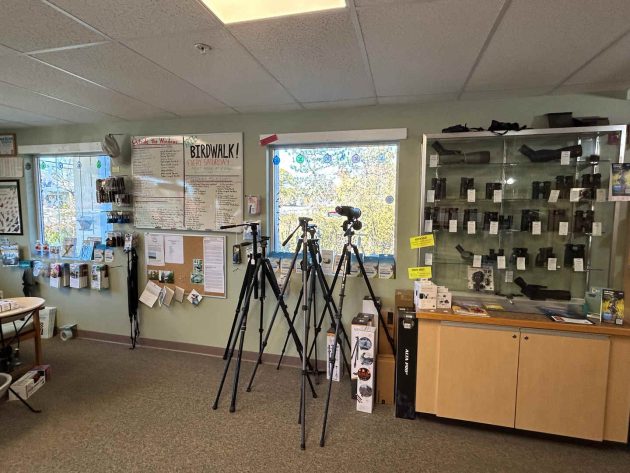
What are the biggest challenges of keeping a specialty bird store thriving for two decades?
Our first location was burned down by a junkie robbing the doctor’s offices above us. Then there was the Great Recession. And then COVID. And now, there are sometimes-crippling tariffs and all sorts of uncertainties. So far, we have made it through each of them by being adaptable and by working our butts off. And, we have come out of each challenge stronger and as a better business.
Of course, the challenges of just finding the right products, keeping costs down for the consumer, and paying bills will never end, regardless of circumstances. But such is the life of every small business.
Can you tell us about trends observed while running your store for 20 years now? For example, what birders ask for more these days, and what is less popular.
If we stick to “birders” per se, it’s been the decline in book – especially field guide – sales. This is not a big issue for our bottom line, but it’s just so disheartening. Field guides do so much an app can ever do, teach so much more, and result in more and quicker skill-building. I use apps – I am not at all a Luddite – but I think it’s clear that good field guides make for better birders much quicker.
As for the “backyard birdwatcher” to draw an artificial dichotomy, the biggest change has been the interest in bird-feeder cameras that take a photo and allegedly identify the bird for you. We finally found a brand to carry in the store that has more of what we like and less of what we don’t like about them, but still, our mission is to be less about technology and more about observing and enjoying nature. That’s an uphill battle in the modern world.
How do you see the role of independent bird stores – to what extent are they threatened by apps and/or big retailers?
Big retailers will never provide the customer service and the information that we can as small retailers. We don’t sell products because of the deal we negotiated for lower prices; we sell the best products we can find. You might find something online for less, but there’s always a catch, and often, like with optics that have “minimum advertised prices,” we sell these quality products for the exact same amount any authorized dealer can sell them for, whether online or in person. I think the “internet is always cheaper” myth needs to die.
Store Garden
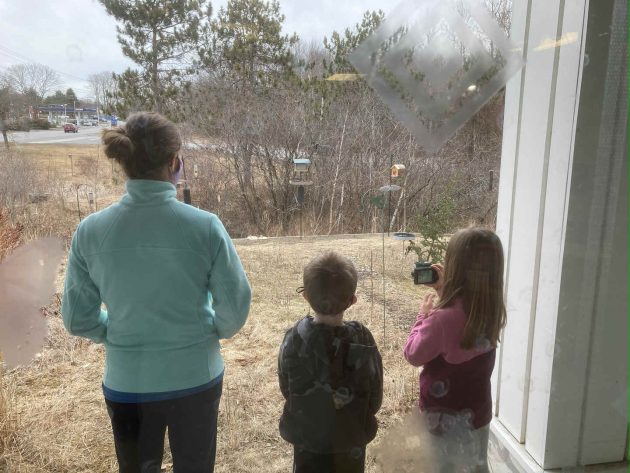
What do you enjoy most about guiding birders in Maine, and what do you find most challenging?
Certainly, the most challenging thing I do is try to show people Bicknell’s Thrush! Could that bird make a guide’s life more difficult? Although there are some days/tours in which Spruce Grouse will give them a run for their money.
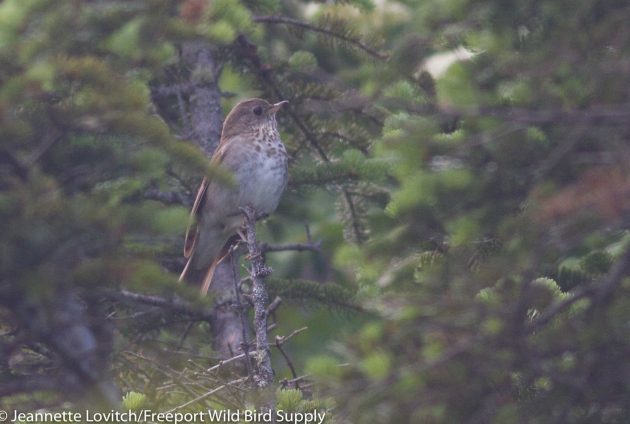
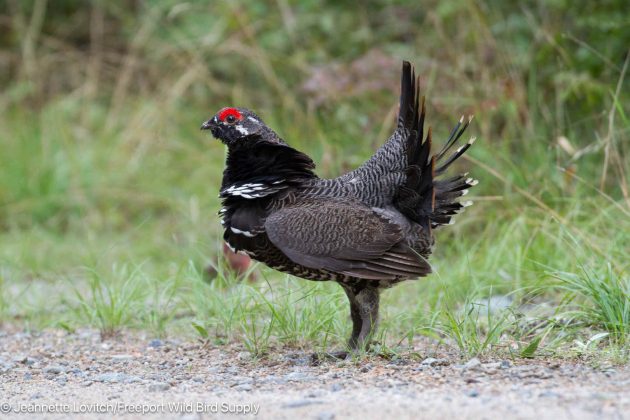
I most enjoy the “a-hah” moments of a birder when they “get it,” like how easy Roseate Tern becomes to pick up on one’s own after only a modicum of guidance. But even more satisfying is when a budding birder starts getting it – even that first moment of using binoculars correctly and seeing a bird well for the first time.
More and more, my guiding focuses on creating connections – birds, habitat, ecology, conservation – and general natural history, where we look at everything from plants to insects to birds. What I have found the most challenging of late is the “tick and run” when someone sees a sought-after bird just long enough to enter it into their phone. To each their own, and I never criticize people having different goals than I in birding – good for them! – it’s just not my thing.
If you could take visiting birders to just one place in Maine, where would it be, and why?
Monhegan Island, 12 miles off the mid-coast of Maine. Hands down, no thought needed! You have nothing to do but get up early and look at whatever birds are around, be they migrants, vagrants, or residents. You are surrounded by birds and birders, and people searching every nook and cranny. “Rarity Fever” runs rampant, where every next bird might be a Mega, and the imagination and adrenaline keep you going. This small island is a birder colony for a couple of weeks in May and September, which is unmatched anywhere in the US, especially when coupled with the inability to drive somewhere else, and coupled with the charms and wonders of the island itself. It’s really hard to describe other than “special.”
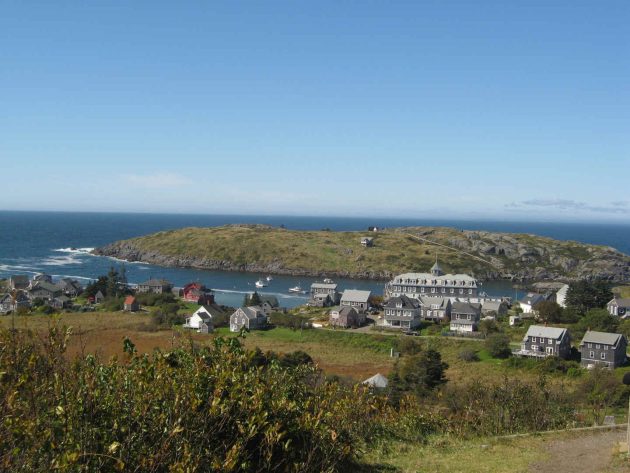
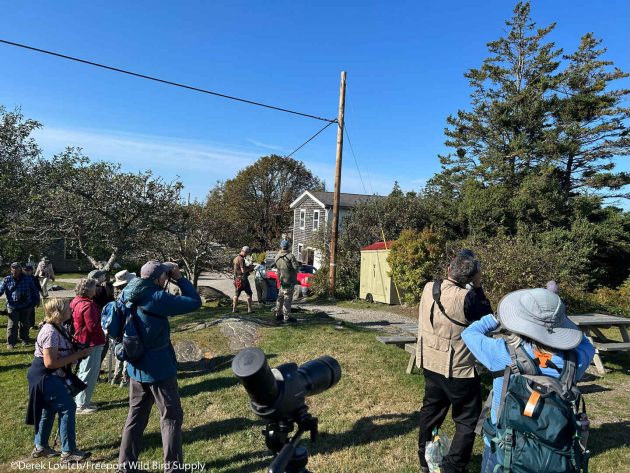
What is one bird in Maine you feel deserves more attention than it usually gets?
This was a challenging question for me, as I really want to answer “all of them.” And the truth is, there is no bird that any birder, regardless of skill level, doesn’t need more time learning from, enjoying, studying, and observing for the sake of observing. My motto is we “need to put the watching back in bird watching”, and so let’s pay attention to everything, all the time.
But if I had to pick one bird right now, I would probably answer Saltmarsh Sparrow. I generally think people should appreciate sparrows more -the subtle beauty, the complexity, the amount of different shades of brown that exist! – but this gorgeous little bird lives a fascinating life, is highly imperiled, and we’re lucky to – for now – have easy access to them, their relative, the Nelson’s, and yes, hybrids thereof!
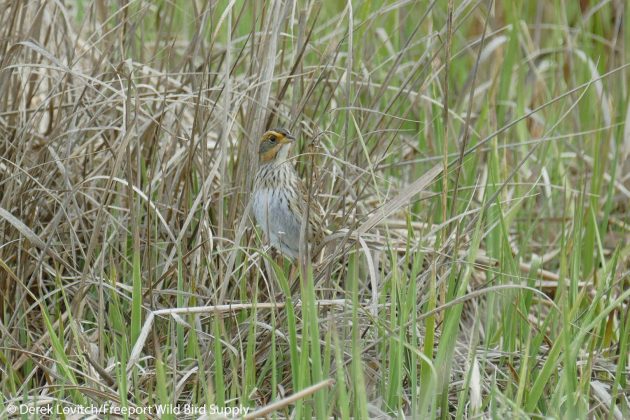
It seems you often bird and guide with your wife. Do you have something like a fixed task split? For example, most photos on your recent blog posts are credited to your wife?
My wife, Jeannette, only joins me on a few select tours where I need an extra set of eyes or a large group can use help getting on birds (like evening American Woodcock programs). Otherwise, she’d rather be looking at birds on her own! I’m also louder. But she’s an excellent photographer and far superior to me in that regard – to the extent that I never carry a camera when I am with her; she’ll do it better anyway.
You have published two books so far (Birdwatching in Maine: The Complete Site Guide, 2017 and 2024; How to be a Better Birder, 2012) – what was different in working on these two?
The experiences were very different. I was so clueless when writing How to Be a Better Birder, and rather overwhelmed. I had no idea that they were going to send my early draft to a reviewer before someone who knew grammar would make it presentable!
By the time I began work on Birdwatching in Maine, I felt like I understood the process and was much more organized, prepared, and with a definitive vision I wanted to execute.
“How to Be a Better Birder” is a pretty bold title—what do you think most birders get wrong, or overlook, that holds them back?
By far the most challenging thing for me, whether it’s an article or a book, is the title. You have to pack so much information into very few words; brevity is not my forte! I had long, very constructive and educational conversations with my amazing editor, Robert Kirk, at Princeton University Press about the title. I remember we chose this together. The thought was we wanted to target “intermediate” birders who already self-defined as a “birder,” but just wanted to get better. I attempted to explain the concepts that made the “great birders” seem great; skill-building on top of already-perceived skills. Interestingly, I have since come to learn that newer, more beginner birders have gotten the most out of it…they haven’t learned “wrong” yet, and while some topics are over their heads, they are more open-minded to concepts and techniques that will yield greater success down the road.
I think what holds back the most birders is the insistence on memorizing a small suite of minute field marks that sometimes lead to an identification (and are definitely necessary to us all when first getting started), but then never build from there. They look for detail x and then don’t look at the rest of the bird. In other words, most birders simply don’t LOOK at birds enough, long enough, and carefully enough, especially the common ones we take for granted -every single bird observation is something to teach us about that bird that we can use later to be a better birder, or even just for the sake of enjoyment.
You also have a very detailed blog (Maine Birding Field Notes) – what role do you see blogging playing today, now that so much bird conversation happens on social media?
That’s a great question. I use my blog for tour reports because it’s a convenient repository for that. It’s great to have one place for people to go to get the bird list from their recent tour (when applicable), or get the real story of the tour – not just a sterile checklist. It is wonderful for those participants to remember and reinforce their experience, but also, I try and attract participants who really want to learn more, on a full immersive experience, and so for me, a checklist is only a small part of the information that is desired.
So that’s the “business” end. My “Week’s Highlights” are meant to add some synthesis and context to sightings, which is mostly lost in the world of social media bird reports, but also helps organize my thoughts, my numbers, and acts as a backup journal.
It also adds content to keep people engaged, especially in between photo-laden tour reports and between the really popular posts, like my annual rare bird predictions blog or my synthesis of feeder bird activity.
Overall, it also keeps me writing about birds – especially when I am not working on some project – which I do just simply enjoy.




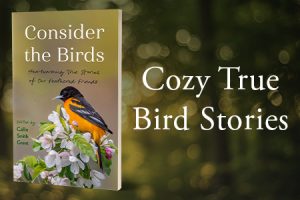

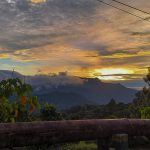
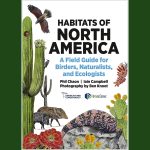
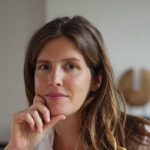


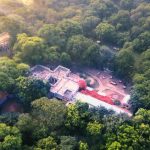
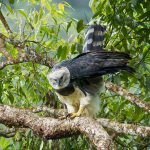
This is such an excellent interview! I don’t know who to thank for it – but, thank you. At first, the opening photo showing Freeport Wild Bird Supply, I didn’t know which Freeport. I was thrilled to learn it is Freeport, Maine (of L.L. Bean fame) and where, a long time ago, I have visited a couple of times—but not as a birder. Unlike Algarve this is a place I can definitely visit. I found myself agreeing with nearly everything Derek Lovitch said. He explained so well the importance of field guides and his dismay over their seemingly limited use. I do use on-line tools in an intentionally limited way, and I would be lost without the many great field guides that I routinely refer to. It’s a reminder that technology has inserted itself in birding in ways that have changed how we learn to bird. I was grateful for his reminder to look at the bird; yes, truly study it. This is the second time I have been reminded of this. I wonder if the rise in digital photography has encouraged “studying the bird” to go the way of the field guide. I have fallen prey to this style of birding. Before I had my camera(s), I used to “study” the bird and I was a much better birder. Now I find myself bracing for the photo. I look around and see almost everyone else doing the same. On a recent Northern European trip, the best birder in the group did not have a camera. She was the first on the bird and the first to call out a new bird. I have consoled myself with the thought that I cannot rollback technology as it relates to birding. As it happens, Derek mentioned Bicknell’s Thrush, a bird I would very much like to see. Visiting Monhegan Island will be travel destination list. Very empowering interview. Thank you.